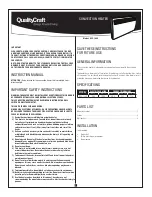
53
1.
Open any non-return valves installed on site.
2.
Check the pre-charge pressure of the expansion
vessel.
Technical guide
Fig. 49
3.
Fill (flush) and vent the secondary circuit:
■
Slightly open quick-action air vent valve, remains
open: See safety assembly, chapter "Connecting
the secondary circuit".
■
For venting, use lever to move the 3-way diverter
valve for "Heating/DHW heating" to its centre
position and click into place: See diagram.
4.
!
Please note
Leaking hydraulic connections lead to appli-
ance damage.
■
Check tightness of the internal and on-site
hydraulic connections.
■
In the event of leaks, switch off the appli-
ance immediately. Drain off liquid via the
drain valve. Check the seating of seal
rings.
Always
replace displaced seal rings.
5.
Check system pressure. Top up with water if
required.
■
Minimum system pressure:
0.8 bar (80 kPa)
■
Permiss. operating pressure:
3 bar (0.3 MPa)
Filling and venting the solar circuit
Danger
Overheated collector areas and overheated heat
transfer medium can cause burns/scalding and
equipment damage.
When working on the collector and the solar cir-
cuit with heat transfer medium, protect the col-
lector areas against insolation.
1.
Check the pre-charge pressure of the expansion
vessel.
2.
!
Please note
Unsuitable heat transfer media result in appli-
ance damage.
Only fill the solar circuit with Tyfocor LS.
3.
Vent the solar circuit.
■
Minimum system pressure:
1.7 bar (0.17 MPa)
■
Permiss. operating pressure:
6 bar (0.6 MPa)
Commissioning, inspection, maintenance
Filling and venting the secondary side
(cont.)
5700 582 GB
















































